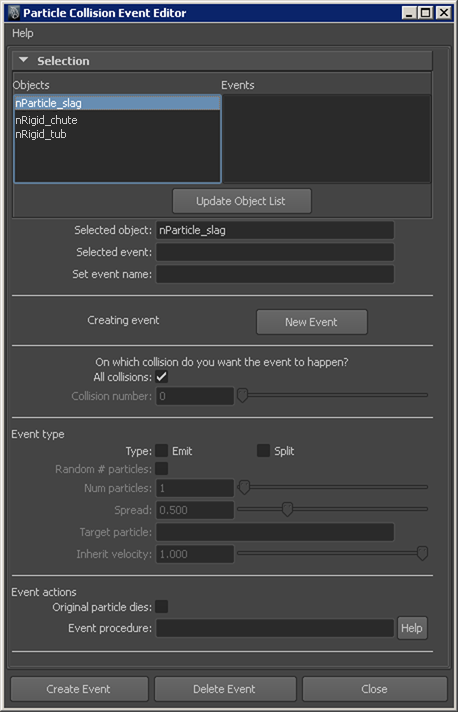A collision event involves a source particle system (the object that executes an event when it collides with collision geometry) and a target particle system (the particle system that emits particles when the event is executed). For this collision event, the nParticle_sparks object is the source particle system, the nRigid_chute is the collision geometry, and the nParticle_sparks_emitter is the target particle system.
For more information about Particle Collision Events, see Particle collision events in the Dynamics section of the Maya Help.
The Particle Collision Event Editor appears.

when the Event type is Emit, the source particle object continues to live after the collision event. When set to Split, the object dies after the event.
This specifies that one particle is created for each collision event.
This specifies that the collision event creates an nParticle object.
This sets new nParticles to not inherit velocity from the nParticle_slag object.
A new Balls style nParticle system is created (since Balls was the last nParticle style selected in lesson 1) when the nParticle_slag collides with the nRigid_chute object. Notice the nParticles are colliding with the slag and breaking it apart. To stop the collisions between the nParticle_sparks_emitter and nParticle_slag, you will create an Exclude Collide Pairs constraint.

 Except where otherwise noted, this work is licensed under a Creative Commons Attribution-NonCommercial-ShareAlike 3.0 Unported License
Except where otherwise noted, this work is licensed under a Creative Commons Attribution-NonCommercial-ShareAlike 3.0 Unported License